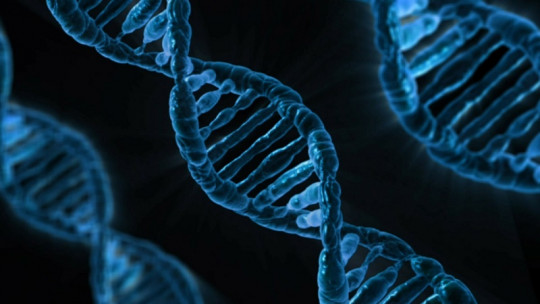
The different species that populate nature reproduce in different ways. One of them is sexual reproduction.
This type of reproduction requires the existence of differentiated structures that allow said reproduction to take place, with two differentiated biological sexes existing in a large number of species (including ours). And in many of these, both sexes present differences at a biological morphological level beyond the gonadal level. This is sexual dimorphism: each of the sexes of the same species has certain characteristics determined at a biological level.
The human being is one of the species in which this dimorphism is observed. Below we indicate some of the main biological differences between men and women.
Main biological differences between men and women
Originally, all human organisms begin to develop with feminine characteristics and subsequently either begin to become biologically masculinized due to the effect of certain hormones such as testosterone or continue said feminized development. In some cases, this masculinization does not occur at a complete level or occurs in part despite having a female sexual karyotype.
Regardless of the case, once the chromosomal and biological sex has been assigned The physical characteristics that are going to develop in the fetus are going to be slightly different (initially with barely perceptible differences) and will cause increasingly visible biological differences to appear in the long run (especially from adolescence onwards due to hormonal changes). Below we indicate some of the main biological differences between men and women.
1. Chromosome differences
One of the biological differences between both sexes, which in fact causes the distinction between female and male, is found in the sex chromosomes. While the woman has two X chromosomes (being XX), In humans there is an X chromosome and a Y chromosome (XY) that will generate, among other things, a differentiated synthesis of proteins and hormones.
Likewise, this difference causes that, as a general rule, men are more prone to suffering from genetic disorders linked to sex chromosomes, since women have two copies of the same chromosome, which can cause the same problem to not be expressed.
2. Hormonal differences
Another of the best-known biological differences between men and women is the presence of different hormonal rhythms and the presence of different proportions of hormones depending on sex. For example, men have much higher levels of testosterone than women for most of life, while More estrogens are synthesized in women.
This influences and causes the presence of specific physical characteristics and physiological functioning in both sexes, visible especially during and after puberty. Behavior is also affected, although it is also largely mediated by education.
The different hormonal rhythms also mean that puberty usually starts earlier in women than in men.
3. Neurological and brain differences
The brain is one of the organs in which differences can be observed between both sexes. In general, the male brain can be up to eleven percent larger in size and have a greater proportion of white matter, while men women tend to be denser and have a greater proportion of gray matter.
There are areas of the brain that are more developed depending on sex: in women the corpus callosum and splenium are usually larger, while areas such as the preoptic area of the hypothalamus, the amygdala and the parietal cortex are larger in men. The suprachiasmatic nucleus also presents differences in shape in the two sexes.
Some of the brain and nervous circuits that we use have differences or are connected differently depending on sex, such as when it comes to sexual stimulation or pain processing. Also the level of stimulation necessary to cause a physiological reaction in response to an emotional stimulus may differ, with less stimulation being necessary in women (although at the level of feeling there may be no differences).
4. Genitals
The organs in which the greatest sexual dimorphism from the moment of birth are the genitals each sex presenting a type of gonads and reproductive system.
5. Hirsutism
The action of hormones causes a greater amount of body hair to appear in men than in women, both on the face and on the rest of the body.
6. Weight, height and bone and muscle mass
One of the best-known differences between men and women is the different muscle and bone development. Generally in our species The male usually has greater development in both aspects and have greater weight, height and strength.
7. Fat distribution
Metabolism also presents some differences at a biological level. The action of hormones such as estrogen They cause women, after feeding, to tend to store a greater amount of body fat and make it difficult to consume them. This is why it is more difficult for a woman to lose weight or develop muscle mass than for men.
8. Skin and sweat glands
Women’s skin tends to be thinner and drier, while men’s skin is generally thicker. Likewise, men have a greater number of sweat glands, so they sweat more than women.
9. Blood flow and body temperature management
As a general rule, blood flow and the ability to maintain body temperature also differ between men and women. While a male’s blood flow throughout his body is relatively proportional Among the different areas, in women there tends to be greater blood flow to the torso and abdomen. This is why they may have greater resistance to hypothermia, although they usually have greater difficulty maintaining heat in the distal areas of the body.
10. Mouth and larynx
On average, females tend to have smaller teeth than males. Likewise, the action of androgens and testosterone during Puberty generally causes men’s voices to be deep and that of women somewhat more acute. Although it exists in both sexes, it is also typical for men that the Adam’s apple is visible (although not in all cases).
11. Heart and lungs
On average, these organs tend to be larger in men. This also contributes to their greater muscular strength and resistance.
12. Sensory perception
There are also biological differences that can cause. In general, men tend to have greater visual acuity, while women have greater auditory and olfactory acuity.
When it comes to vision, women tend to have better color perception (there are women who have up to four types of cones) and have greater angular vision and perception in the dark regardless of whether it has less acuity, while man, in addition to the latter, usually captures depth and distance better. And despite having lower hearing acuity, men have an easier time locating the source of sound.








